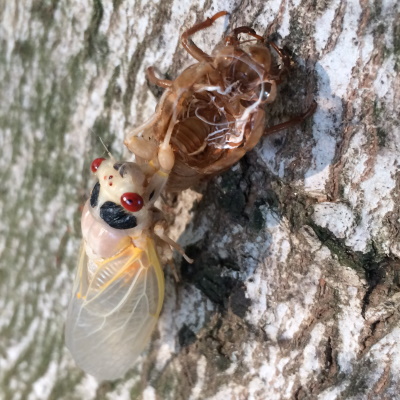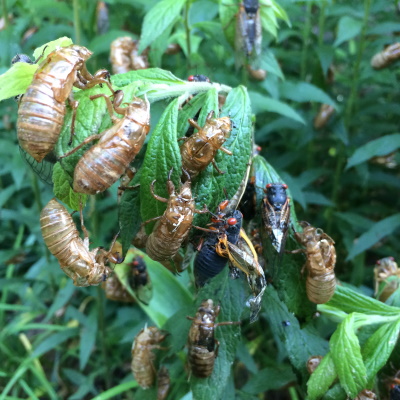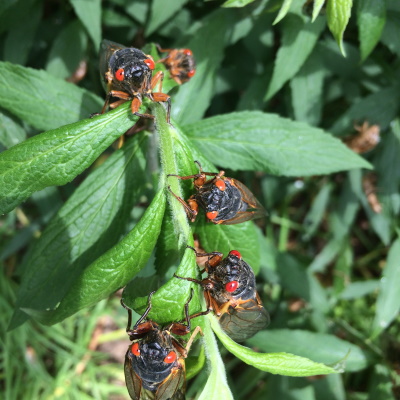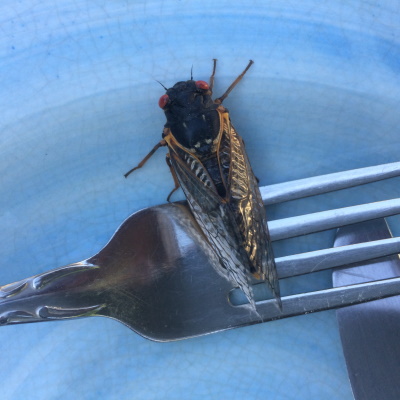

|
| Cicadas swarming |
The Cicadas 17-year Life Cycle
In May 1987, then again in May 2004 billions and billions of Cicadas bugs swarmed all over North America. During a 5-6 week period they chirped, fed and most importantly bred, then they disappeared underground again.
In May 2021 they were at it again!
The amazing thing is that the 17-year gap is no accident. The cicadas are using a prime number to avoid predators.
17 is a prime number. This means it doesn't divide by any numbers apart from 17 or 1.
Suppose you have a predator desperate to catch cicadas when they're out of the ground. Suppose the predator had a life cycle of e.g. 3 years, and the first year depended on eating cicadas. If the cicadas appeared e.g. every 6 years, then every 2nd generation of predators would be able to rely on eating them. Good news for the predators, but bad news for the cicadas.

CREEPY CICADAS FACTS At the peak of the 2004 swarming season...
|
- If a predator had a 5 year life cycle, it would be 5 x 17 = 85 years before it could come to rely on the cicadas arriving again.
- If a predator had a life cycle of 11 years, it would be 11 x 17 = 187 years before the cicadas would arrive.
Unless a predator adopted a life cycle of 17 years (or a multiple of 17 such as 34 or 51), then it will always be 17 generations before it can expect cicadas arriving.
Not surprisingly predators can't be bothered to wait.
Incidentally, there are also some 13-year cycle cicadas.
How do they know when 17 years are up when they are underground in the dark?
Apparently they nibble on plant roots, and they can tell by the health of the roots what time of year it is and how many years have passed.
Cicadas Gallery 2021 photos by Cathy Kristiansen

| 
Cicadas crawling out of skin, yet to darken. |
| Cicadas hatching. |

| 
Cicadas eyes! |
| Cicadas size |
| |||||||||